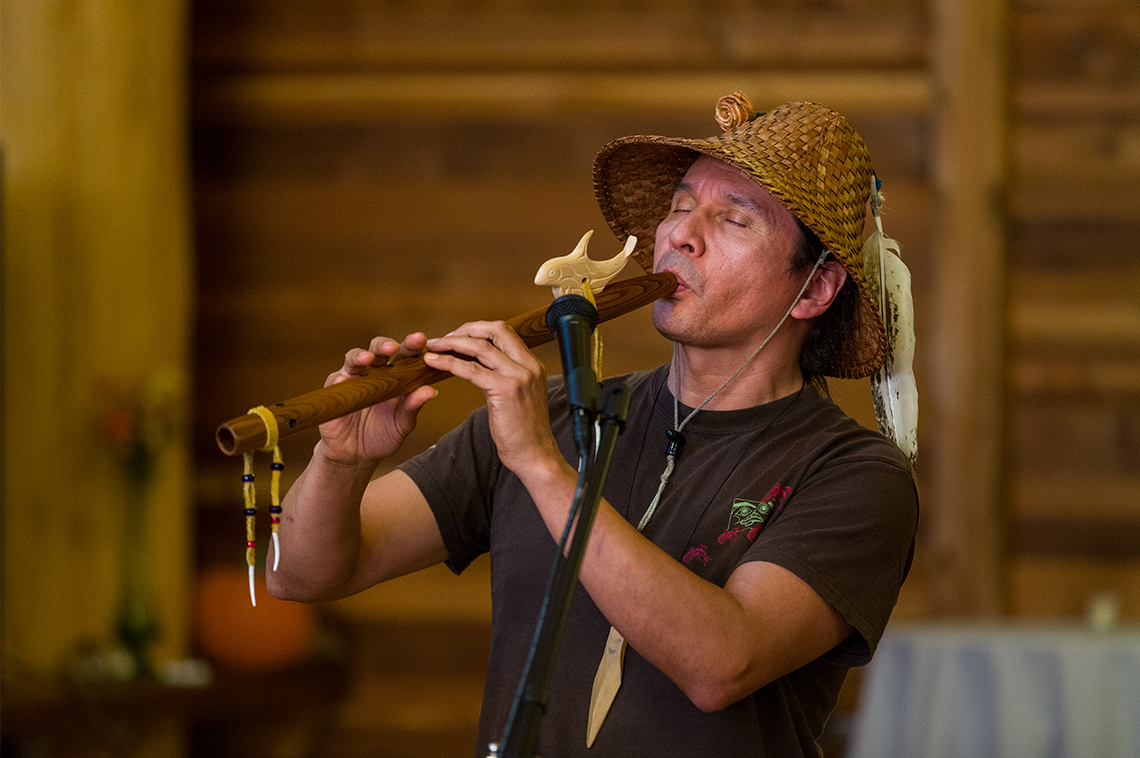
We’re excited to report that May marked the kickoff of our Arts, Culture and Environment Working Group following the annual #ArtPlaceSummit in Seattle. In collaboration with online environmental news platform Grist and the Sierra Club’s Ready for 100 Campaign, ArtPlace Research Strategies brought artists together with a diverse and accomplished working group of environment and energy sector leaders—including policymakers, researchers, community organizers and advocates—as part of our ongoing effort to understand and advance the role of artists, arts organizations, and artistic activity in achieving environmental progress.
Unreleased research by ArtPlace’s research partner Helicon Collaborative provided a starting point for the working group discussion, and will be published in the fall as the next in our series of sector-specific field scans.
Stimulating public demand for a more sustainable future
As a sneak preview of Helicon’s findings, one of several ways that arts and culture supports environmental goals is by stimulating public demand for a more sustainable future. Art and culture can help by giving people a personal and emotional connection to their environment so they want to protect and fight for it; or by giving people a visceral experience of what a more sustainable world can actually look and feel like, so that they want, expect, and demand it.
There is a long history of artists working towards these goals, and a number of the artists who participated in the working group described their approaches first hand – from Dan Borelli’s work on the Ashland Nyanza Project in Massachusetts to Works Progress Studio’s Water Bar & Public Studio in Minnesota. Another project, the Clear Creek Festival in Rockcastle County, Kentucky, is featured as a mini-case in Helicon’s forthcoming field scan and excerpted here:
Artists Bob Martin and Carrie Brunk moved back to Appalachia in 2010 to live close to the land they grew up on. This is the heart of coal country, and people’s strong positions for or against the industry have often been contentious, even between neighbors. When Martin and Brunk moved there, the region was suffering from the economic and social devastation caused by the exodus of coal companies, which meant that everyone was in the same boat trying to figure out how to create a viable future for the community.
Martin and Brunk started the Clear Creek Festival, hoping that bringing the community together around art, music, food, and storytelling could heal some of the historic divisions. Each year they brought a wider range of people from the community together to celebrate with food, storytelling, and music—core elements of the region’s culture that crossed political and ideological lines.
In advance of the 2014 festival, they worked with local farmers, foragers, artists, builders, and others to collect stories about what the region meant to people, which became the basis for a theater piece called “Land, Water, Food, Story.” The performance was preceded by a barn raising and culminated with a locally-sourced dinner. In a reflection for Alternate Roots, who supported this work through the Partners in Action program in 2014-2015, Brunk writes that this “opened up an explicit and aspirational conversation within our community about our relationship to the land, about the preciousness of our good water, about our food and farms as a source of abundance, about the kind of community we live in and the future we are building.”
Then, in the winter of that year, “land men” showed up in the region, hoping to buy land cheaply and sell it to energy companies for natural gas exploration, a well-worn strategy in poor regions. Brunk says, “Whether they were drawing on the history of this region’s largely compliant relationship to extractive industries or whether they were just counting on people who mostly don’t have a lot of money being willing to do anything to get some, they figured it was a safe bet that many would just sign.” But community members had spent almost a year talking about their relationship to the land and what they wanted for their future, and they were very clear that gas exploration did not fit their aspirations. Moreover, the trust and social networks that had been built allowed information to spread quickly. The community created a plan of action and a network, Frack Free Foothills, to stay informed and organized.
Martin says, “The cultural and organizing work we had been doing was preparing the ground for us to be able to respond to this threat.” He notes that the community has become “resilient. It is a network that is able to respond to fracking, climate change, homophobia or whatever else might come our way.”
Clear Creek is now working with Kentuckians for the Commonwealth and other groups from around the region on a plan for a just transition to a new economy. They are using a range of cultural organizing strategies to engage people in planning for the future. Martin says this provides “a way to look at the possibilities for our region from a perspective of abundance rather than of scarcity” and create an atmosphere that is “enlivened, engaged, hopeful.”
Stay tuned for the forthcoming field scan and a report out from the Arts, Culture and Environment Working Group in the coming months!





